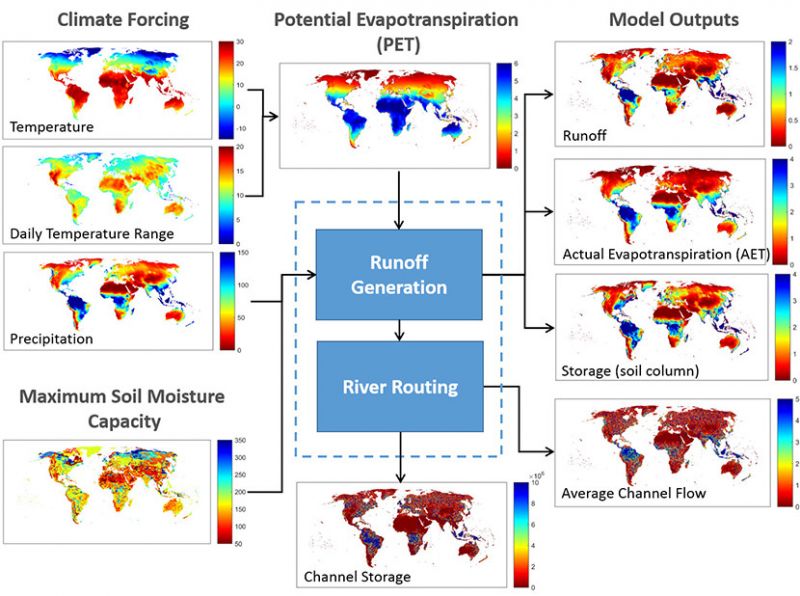New Open Source Software Simulates River and Runoff Resources
Published on by Water Network Research, Official research team of The Water Network in Technology
Researchers can use Xanthos to examine the implications of different climate, socioeconomic, and/or energy scenarios over the 21st century.

Main inputs and outputs of Xanthos hydrologic model to study runoff generation and river routing. Image courtesy of Pacific Northwest National Laboratory
The Science
Freshwater resources are finite, unevenly distributed, and changing through time. The demand—and competition—for water is expected to grow both in the United States and in the developing/developed world.
To examine the connection between supply and demand and resulting regional and global water stresses, a team developed Xanthos. The open-source hydrologic model is available for free and helps researchers explore the details and analyze global water availability.
The Impact
Researchers can use Xanthos to examine the implications of different climate, socioeconomic, and/or energy scenarios over the 21st century. They can then assess the effects of the scenarios on regional and global water availability. Xanthos can be used in three different ways.
It can operate as an independent hydrologic model, driven, for example, by scenarios. It can serve as the core freshwater supply component of the Global Change Assessment Model, where multiple sectors and natural systems are modeled simultaneously as part of an interconnected, complex system. Further, it can be used by other integrated models and multi-model frameworks that focus on energy-water-land interactions.
Summary
Xanthos, an open-source hydrologic model written in Python, simulates historical and future global water availability on a monthly time step at a spatial resolution of 0.5 geographic degrees. Scientists designed Xanthos to be extensible and used by researchers who study global water supply, including those researchers who work with the Global Change Assessment Model, also developed at Pacific Northwest National Laboratory.
Validated with global data sets, Xanthos includes modules for calculating potential evapotranspiration, runoff generation, and stream routing. Researchers are able to customize Xanthos’ configuration file to specify model inputs, outputs, and parameters. Xanthos can provide historical observations and future estimates of renewable freshwater resources in the form of total runoff.
The model’s modular and flexible structure is intended to promote community engagement, enabling users to integrate their own research through extensible modules.
Source: US Department of Energy
More information: Xinya Li et al. Xanthos – A Global Hydrologic Model, Journal of Open Research Software (2017). DOI: 10.5334/jors.181
Download the software: github.com/JGCRI/xanthos
Media
Taxonomy
- Resource Management
- Water Resource Mapping
- Hydrology
- Hydrography
- River Studies
- Hydrogeology
- River Restoration
- Water Resource Management
- Water Software
- Database Software